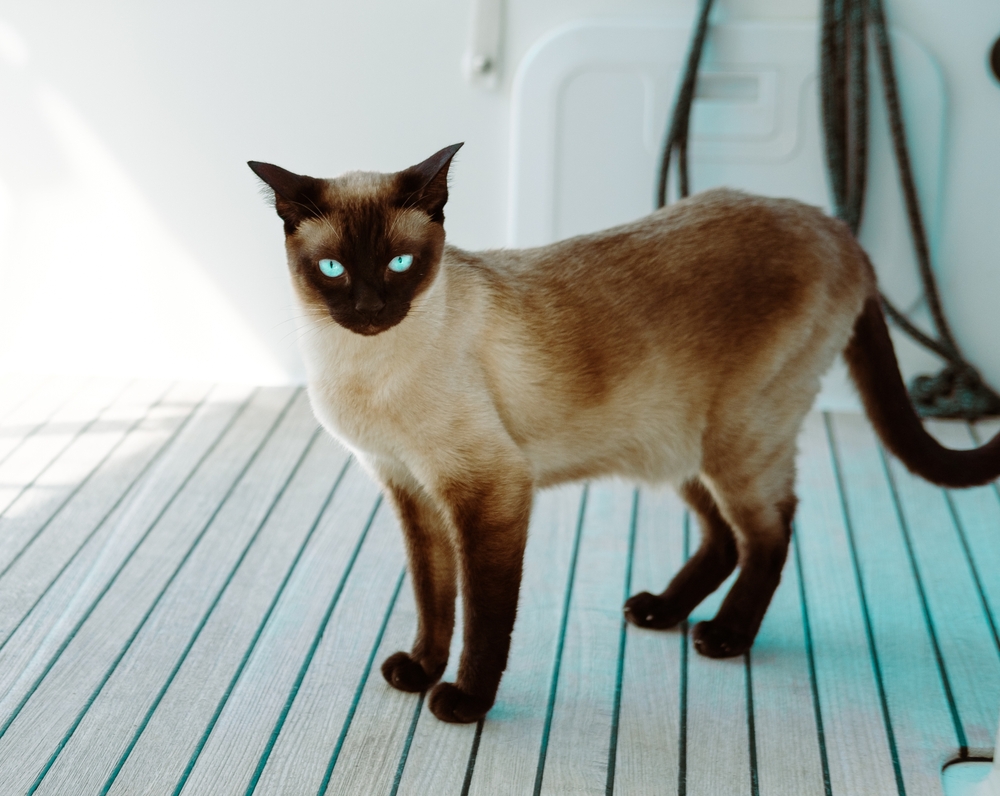Your Adult Cat: What to Expect at 3 to 4 Years
Updated on October 08, 2024

Your adult cat is your friend. She will curl up on your lap in the evenings and sit quietly for much of the time, content to simply gaze out the window. Gone is the rambunctious kitten, replaced by a regal king or queen. But your 3- to 4-year-old cat still needs plenty of playtime and affection to remain the healthy, contented creature she has become.
All featured products are chosen at the discretion of the Vetstreet editorial team and do not reflect a direct endorsement by the author. However, Vetstreet may make a small affiliate commission if you click through and make a purchase.
Physical and Mental Development
Cats are affectionate creatures, but mainly on their own terms. Respect your cat’s need for space; she will come around to you when she feels like it. Remember, she’s a territorial animal and may get aggressive when annoyed. If you have adopted an adult cat, you will need to work slowly to socialize her into your home. She may find a safe spot to hide until she feels more secure. Approach her on her level with an open hand; she will likely move to sniff it. Then, you can attempt to slowly stroke and pet her.
If you have children, you will need to teach them how to respect your cat’s need for space, as well as how to play with the cat nicely. Start with a long feather or a teaser toy on a stick and supervise children closely, reminding them to always be gentle with the kitty. The long feather keeps little hands away from kitty’s claws and teeth, while giving your kids a fun way to safely play with your feline.
Here are some rules for interacting with your cat:
- Never chase the cat.
- Do not drag the cat out from her safe spot. Cats should be gently enticed to come out (and left alone if they choose not to).
- Play with the cat using a feather, teaser or fishing toy.
- Do not use hands or feet to play with your cat. Ouch!
- Pet your cat with long, gentle strokes and avoid patting her.
- If your cat starts twitching her tail rapidly or swiveling her ears in an agitated motion, stop petting and leave the cat alone.
- Remember, cats generally do not like being stroked on their bellies.
- Do not pick up your cat using the scruff of her neck. Make sure to support her front and back ends when lifting or carrying.
- Give the cat privacy when she is using the litterbox.
- Children should not pick up the cat unless sitting on the floor or in a sturdy chair.
- Avoid carrying the cat everywhere. A cat carrier should be used for visits to the veterinarian or other road trips.
- Do not let your cat roam loose outside.
Behavior Changes
Next to house soiling and scratching, aggression is the most common behavioral problem in cats. Some cats are more aggressive than others. Many social, boisterous cats will go with the flow, while timid cats might feel threatened more easily. Other cats show aggression when their territory is threatened (this is more common in males). Female cats, like many mothers, can exhibit maternal aggression. Play aggression can be a problem for cats who weren’t properly socialized as kittens.
If you have more than one cat, you may experience competitive aggression, which can arise when cats compete for a choice toy, treat or even a stroke. A regular feeding schedule, and feeding the cats in separate areas, can help reduce their perceived need for competition and may help control these aggressive tendencies. Redirected aggression occurs when a cat has been aroused by an outdoor cat or another animal, and takes out her aggression on anything nearby.
Cats can also show aggressive behavior when in pain or stressed, and may lash out at their owner or caregiver. Pay attention to your cat’s emotional cues, and give her space when she needs it. Never attempt to handle a cat in this aroused state, because the risk of serious injury is real. If you must intervene, a loud noise may distract your cat; however, this can also make some cats more aggressive. Throwing a blanket over a cat can allow for safe handling, if absolutely necessary.
Health and Nutrition
A healthy, adult cat with normal activity requires only a maintenance diet. A good-quality cat food that is complete and balanced is appropriate to feed your feline. How much you feed your cat depends on her activity level, the environmental temperature and body metabolism. Be careful, because this stage of adulthood is the time inactive cats put on weight. You can tell if your cat is at optimal weight if she is well-proportioned, has an observable waist behind the ribcage and has ribs that can easily be felt (but not seen) with only gentle pressure.
Many cats tend to be nibblers, or occasional eaters, who prefer to eat small amounts of food throughout the day. Other cats may eat large meals too fast, so they do better when fed several, small meals during the day. Either way, fresh water should be available throughout the day. A temporary loss of appetite is usually not a problem in adult cats, unless it persists for more than a day or two, or if the cat shows other signs of illness. If this happens, be sure to consult your veterinarian.
Cats require a higher level of dietary protein and a different nutrient balance than dogs. And, like kittens, mature cats require taurine (an amino acid that helps stabilize cell membranes) in their diet. Unlike people or dogs, cats cannot make taurine. Deficiencies of this amino acid can result in blindness and heart disease. Since taurine is critical to your cat’s health, it is important to feed a specially formulated, high-quality cat food, and never feed her dog food or people food.
Pet Health Insurance Can Help
Unexpected veterinary bills can make caring for your pet challenging. Don’t let financial stress get in the way of making the best decisions for your pet. Pet health insurance can cover surprise costs such as veterinary visits, prescription medications, and life-saving procedures.
Review personalized options for your pet below:
Training Tips
Cats are excellent at napping, but they still need regular exercise to keep their bodies healthy, their minds sharp and to use up excess energy. Channel this energy into quality playtime. In addition to small cat toys, your cat will enjoy chasing light from a small, red laser dot or a narrow-beamed flashlight. Make sure you only use lasers made for cats; other small lasers and laser pointers can cause eye damage if a cat looks into the light. Either way, never shine a laser pointer or bright light into your cat’s eyes — or anyone else’s. Even if no permanent damage is done, it is painful and should be avoided. Rotating favorite toys should keep your cat interested and happy to play with you.
Be sure to make time to play with your cat at least once a day. Chances are, the result will be a happier, healthier feline friend.
More on Vetstreet:



